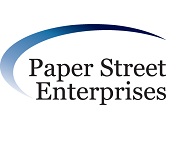I recently chatted someone that is also in the software business. We gave a pretty good demo, and at the end of the day, a successful call. One of the things I took away from the call was that one of the audience members kept stressing that life would be easier for me in terms of selling if I could show a revenue increase, instead of a cost decrease. Initially, I thought, what a great idea. I need to come up with an idea to stress revenue generation. Then it started to sink in… If I jump down this rabbit hole, I end up developing another product, or enhancing an existing one. Not entirely a bad idea, but significant effort without direct request from a customer. That will put me right back here where I am. So I decided to slow down and think about this a little. And here is where I had a hard time…
How is a revenue increase better than a cost cut??? Follow my logic, and perhaps you can find my flaw. Revenue and cost are both money. I know in the accounting world they show up in different places on the docs, but isn’t spending less money to do your job just as much of an impact to the bottom line? Margin = revenue – cost. So if I make revenue bigger or I make cost smaller, don’t I end up in the same place? and better yet, once I cut a cost, typically that process stays in place and the cost doesn’t rise. Increasing revenue isn’t as static. Revenue could be more customers, more sales, higher prices for a sale. That’s all good… but what if the customers don’t need more widgets? having a fancy interface to enter a sales order doesn’t help. But the same customer may have widgets in the field that need to be serviced. If I improve the process, that generates better customer satisfaction, it may speed up the repair process, meaning less down time for the customer, and for the business, it means a reduced cost to do the same thing.
Unfortunately, here’s the rub, and it’s exactly what I’ve been struggling with in all of my prospects and potential sales. In general, revenue generators get more budget. These areas (like sales, marketing, etc.) tend to get the first pick at process improvements, new software, and new stuff. I guess this is where it might pay to be more of an accountant because this seems disproportionate in terms of the return it could generate, to me at least. I’m sure there has to be something… because everything is about getting customers. However, keeping existing customers happy seems like a far more important task in business. Given the cost of customer acquisition, it seems the cost to keep a customer should be a lot less, and doing incremental improvements to keep the customer satisfaction high would be well worth the money. I’m not suggesting take all the sales improvements and put them into service (although, I’d love it), I am saying to take a chunk of those sales dollars, an extra 5%-10% and put them into the aftermarket business to improve customer retention… Hell, maybe that needs to be my marketing campaign… I could become the customer retention expert… what do you think??? regardless, I’d love to hear your take on this… if you know it from accounting, budgeting, or whatever, I’m looking to understand.
Thanks for reading,
